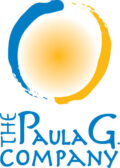 “You just haaaavve to be on Twitter, LinkedIn, Facebook, Pinterest, other social media, and have a blog!”
“You just haaaavve to be on Twitter, LinkedIn, Facebook, Pinterest, other social media, and have a blog!”
“You absolutely need the new must-have app for business!”
Sound familiar? Have you heard some well-meaning expert or colleague tell you this, likely within the last week?
Yep, me too! And if I hear about one more must-have, “this will solve all your problems”, gotta-have, magic bullet piece of technology I will scream, and that’s not good because it’ll scare my cats.
It’s not that I don’t like technology – in fact I like it quite a bit and have almost 20 years of corporate and entrepreneurial experience in technology fields. It’s just that technology isn’t a magic pill that is going to save anyone. In fact, too much or the wrong technology will actually hamper your efforts.
A quick Google search of the phrase: “business software” or “business applications” yields 614,000 results. The search phrase “business hardware” yields another 323,000 results. As of the fall of 2013, the iTunes store had over 1,000,000 apps.
So, why don’t you pause reading this article, download them all, and then let me know how they help you?
OK, I am just being a smart-a*@, but the numbers don’t lie. There is a lot of technology to choose from for business and even more if you factor in all the personal applications. Depending on who you listen to, you could easily end up with hundreds of apps in your workflow (or at least installed on your devices) that you either never use or use in a half-hearted manner. It will slow YOU down much like too much will slow down the machine it’s installed on.
That’s why I say again – It’s not about the technology! I can remember my first day on the job when I worked directly for a CIO of a major corporation. He said to me that in his opinion technology is meant to enable business. Nothing more, nothing less. I share his philosophy wholeheartedly!
Yet, especially for so many self-employed business owners, I see technology strangling them, disabling them, and watering down their efforts. I have clients and colleagues who practically gasp for breath talking about the stress technology creates for them.
This is why I want you to flip your thinking.
Strategy comes first. Then come the tools to support that strategy.
Processes and procedures come first. Then come the tools to make those processes more effective and efficient.
As a general rule, less really is more. More peace of mind, more productivity, and more ease.
Every piece of technology (hardware or software application) should have a definitive purpose for being in your business. “So-and-so at the latest conference said I should” is not a definitive purpose.
So here’s what I want you to do.
First, the inner awareness:
Take a few deep breaths, close your eyes, and bring to mind all the different technology you use throughout the day. Notice what your relationship is with each of those technologies. What do you feel in your physical body as you think of each piece of technology?
Take a moment to note what you discover.
Now, the practical action:
Make a list of every piece of technology and software you use. As you read that list, loop back through the inner awareness exercise so you can make a note next to each specific application. Then, ask yourself:
- Why do I have this piece of technology? What is its definitive purpose?
- When was the last time I actually used it?
- On a scale of 1-10 (1 being “it’s crippling me!” and 10 being “It’s a delight and makes things so much easier!”) – rate the impact of this technology on your daily life.
- If it’s not a 7 or higher, ask yourself why that is. Do you need support in how to use it better? Is it a wrong fit? Do you never use it?
Technology is meant make your business and life productive and generally enhance the ease and joy with which you do things. If that isn’t happening, it’s time to go back to basics. Strategy first!
If you need help honing your strategy and taking charge of your technology so it works for you, not against you, let’s have an exploratory conversation because I can help! Click here to set up a time to connect.
photo credit: Matthew Clark Photography & Design via photopin cc
